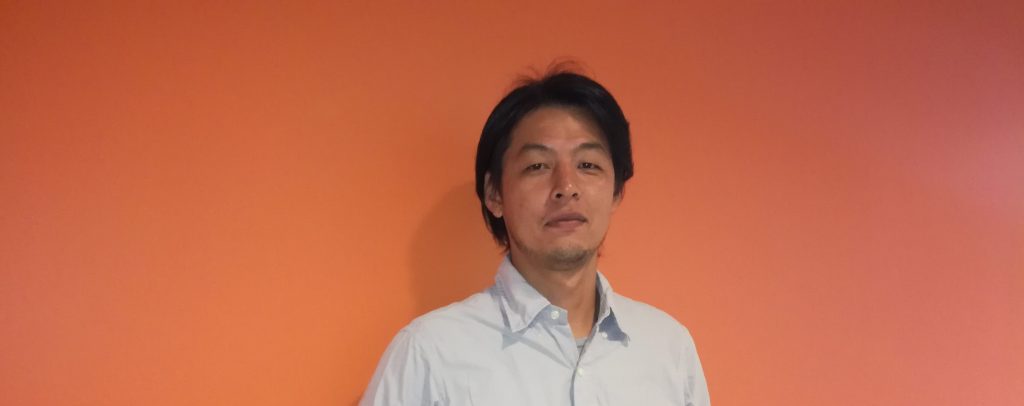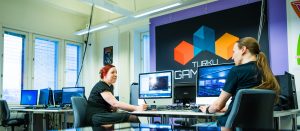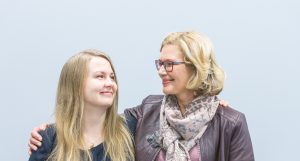Introduction The Futuristic Interactive Technologies research group of Turku University of Applied Sciences (TUAS) focuses in its RDI operations on…
Tekijät | Authors

Learning Methods of TUAS through Eyes of Visiting Teacher
How do the teaching methods following the principles of innovation pedagogy, a practical and working life oriented learning approach developed at Turku University of Applied Sciences, appear through the eyes of a visiting physics teacher from Japan?
I stayed at Turku University of Applied Sciences (TUAS) for six months (from the beginning of October 2016 to the end of March 2017), by using the international exchange programme of National Institute of Technology, Japan.
During this period, I worked as a visiting lecturer at TUAS, mainly attending physics classes. I also had the opportunity to attend classes in e.g. mathematics and product development. Through this experience, I learned many things and was inspired on many aspects. In particular, I could reconsider about the meaning of education well.
Developing Multi-professional Skills
A specific feature of the educational system at TUAS is the efficient introduction of Active Learning (AL). In terms of AL, the curriculum is constructed to facilitate students developing not only practical skills but also multi-professional competence. One may think that in order to develop multi-professional skills, it is necessary to introduce a high number of classes to cover a variety of subjects. Interestingly, the number of classes at TUAS, however, is lower than that of a typical engineering course. The students do a lot of independent work to acquire professional knowledge and field-specific skills, while the teachers exist as facilitators and advisers.
The students do a lot of independent work to acquire professional knowledge and field-specific skills.
Applying this approach throughout the studies, even in lectures, ensures that the students can learn things by themselves.
Fostering Unique Experts
This approach towards learning is quite different from the traditional educational system, especially regarding the role of teacher. In the traditional educational system, the teacher offers approximately half of the contents to be learned during a lecture, and the students’ job is to work for gaining the remaining half of the required knowledge. The TUAS system, however, emphasizes the active learner role of the student and thus requires more independent work from students, which is a key point of the success of TUAS.
At TUAS, it is essential to think by oneself rather than follow the teacher and memorize information by heart. Also, TUAS teachers never restrict the diversity of thinking; instead, they respect the student ideas. How to reach the goal is the matter of the student.
As a result, each student can go their own way until they acquire independent skills. This means that while homogeneous knowledge and skills are important in the traditional system while homogeneous knowledge and skills are valued in the traditional system, the TUAS system fosters unique experts.
The TUAS system focuses on “Learning skill”, which I think is quite brave, because there is no explicit form of a specific learning skill. In Japan, the teaching system is still teaching-based, emphasizing the role of the teacher and the contents they teach. The TUAS model concentrates instead on what students actually learn, and this is the thing in demand in the modern educational scene.
A risk exists regarding the information available on the web.
Nowadays, we can obtain tremendous amounts of knowledge easily by using the Internet. Then again, knowing something is not important as such; instead, we need to focus on how to use our knowledge. Also from this point of view, the learning methods of TUAS are effective.
However, a risk exists regarding the information available on the web. We need to check the reliability of the Internet-sourced information thoroughly. Students may lack this viewpoint and refer to the information on the web without any concerns about the reliability of the source, an issue that has recently created a common problem in the educational scene all over the world.
Impressed with Inverse Teaching Practice
Since I am a physics teacher, I would like to share some notions about the physics education in TUAS.
In a traditional physics class, students need to possess a certain level of mathematical knowledge beforehand. Basing on their mathematical skills, students learn the theoretical aspects of each phenomenon. The things learned in theoretical classes are later confirmed in experiments carried out in laboratories.
The inverse practice reflects the real-life situation in the research and working life.
However, the physics course at TUAS starts with the laboratory class. In the theoretical part, the teacher treats the formula, the mathematics of which has not been introduced to students beforehand. The procedure is a complete inverse of the traditional method, something that I found impressive.
In fact, the inverse practice reflects the real-life situation in the research and working life. Also, this way the students get a feel for the actual phenomenon right in the beginning, which may make them motivated to learn physics and mathematics.
In the traditional procedure, students learn the systematic aspect of the theory effectively, as well, but highly symbolic ideas are often utilized by using mathematics. This makes physics difficult for students. Moreover, especially for engineering students, it is not always clear that why they need to learn physics. Also this has been taken into account in the TUAS method, with showing them the answer in the beginning.
Active Teachers Result in Active Students
TUAS offers an interesting opportunity for students with a great success. This is due to not only the unique educational system, but also the teachers’ enthusiasm for education.
For teachers, their students look like mirror image of them. If a teacher wishes to foster active students, the teacher should be active. If the teacher is not active, they should not complain about the passive attitude of the students. The teachers at TUAS are enthusiastic of education and interested in their students. These aspects create a positive and active atmosphere at the campus.
I often hear discontent about the passive attitude of students in Japan. After visiting TUAS, however, I think many problems in Japan are originated in teachers or in the educational system.
For me, now is the time to introduce a change in my lectures. Thanks to my long visit to TUAS, I now have a clear vision for this change.
***
I would like to thank all the staff members of TUAS for their warm hospitality during my stay in Finland. Especially, I would like to thank physics teachers P. Granholm, M. Karhunen and A. Haarto. I would like to thank P. Oliva for her assistance with stay in Finland. I would like to also thank J. Kontio and J. Roslöf for giving me the opportunity to visit TUAS.








